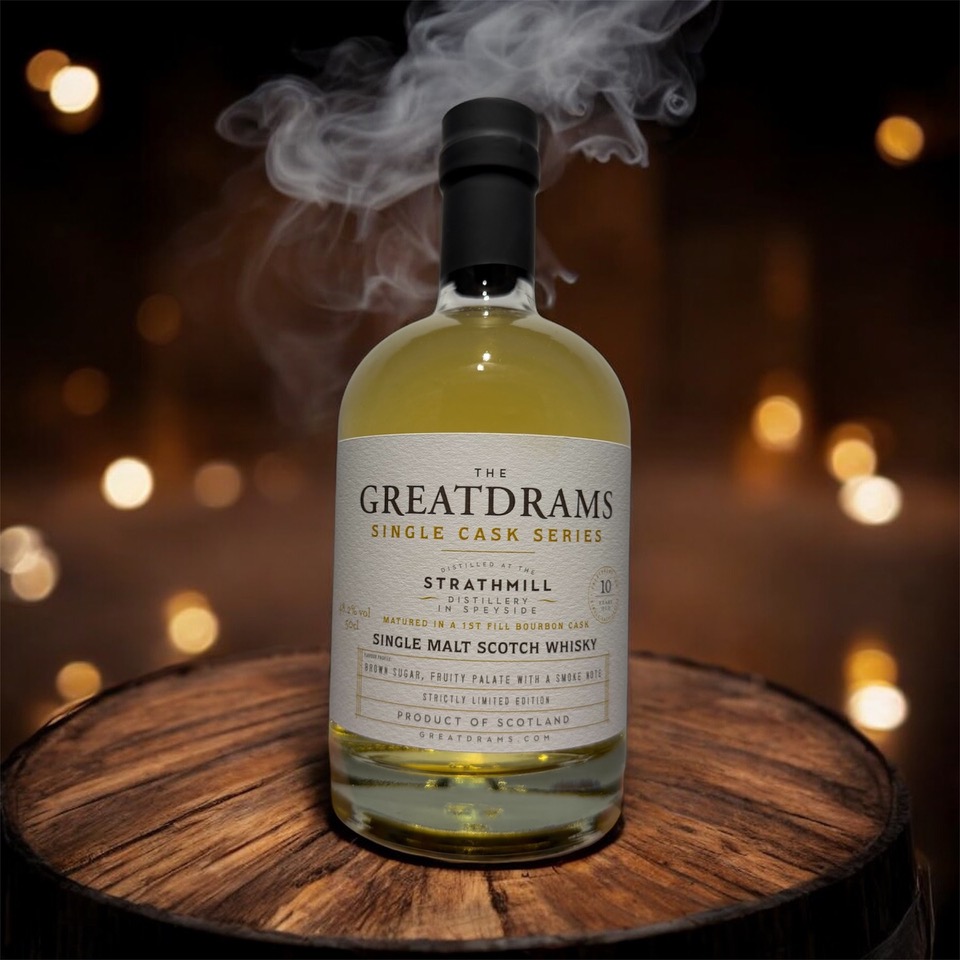Focus on the whisky process: Malting
let’s begin
Once you have the perfect barley to make great Whisky, the next step is malting. This is where grains are processed to encourage their starches to develop so that alcohol can be made.
In the UK alone 1.5 million tonnes of malt are produced every year, using around one third of the UK’s barley production. Around 91% of this remains in the UK for use in distilling, brewing and food production.
The final per cent is exported around the globe for use in Whisky making.
To do this, malting must occur, which allows grains to partially germinate before drying them.
Starches are present in barley to provide sprouting seeds with nutrition as they grow. To give distillers access to the starch, barley must begin germination.
In order for germination to occur, the seed must be placed in an environment similar to Spring or growing season, igniting the chemical processes within the seed that allow it to sprout.
Steeping
This process is started through steeping, which is repeatedly submerging the seed in water with a temperature of 16°C. On the flip side of this, to keep grains from germinating at all, they must be kept below 15°c.
The water raises the moisture in the seed but for this to fully work, the seed must also be given periods of dryness. These are called “dry stands” as opposed to the “wet stands” when the seeds are submerged.
The seeds usually spend several hours in each stand, with a typical malting process being 7 hours wet, 10 hours dry, 9 hours wet, 7 hours dry, 7 hours wet and 2 hours dry.
This all works to break through the husk and allow the seedling to have the correct amount of both water and oxygen. As the seed continues to germinate, it will begin soaking up more and more water with every wet stand.
To create an even malting process fans blow air through the seeds during the wet stand and remove carbon dioxide during the dry stands.
Once the grains have begun to sprout, observed by a small white dot, which is actually the root, beginning to emerge from the seed. This is when the barley is moved into the germination period of malting.
To further encourage growth a hormone called gibberellic acid is added that activates the synthesis of hydrolytic enzymes in the seeds. This enzyme converts starches and proteins into simple starches and sugars.
The barley is broken down completely, allowing it to be easily crushed in the mashing process.
Germination
This is where the grain really begins to grow. This is done over a period of four to five days, with the grain being turned at least twice a day to allow the heat and carbon dioxide created during germination to dissipate.
Every element of the malting floor is controlled, from temperature, humidity and airflow, all of which will contribute to the overall flavour of the Whisky in the end.
In the past, malting floors have been large concrete floors on site that would require a lot of work to look after, with the grains needing to be spread out initially and the turned, all by hand.
These days, most distilleries out source the malting to maltsers who use modern day mechanics to carry out these tasks.
The grains must be carefully watched, to ensure that they do not over grow. When the root is around the same size as the seed itself, then the barley is ready to be dried.
Any time after this means the barley will have used too many sugars to grow and yeast will have nothing to convert into alcohol during the fermentation stage. On the other hand, is the grain is stopped too early, not enough sugars will have been produced.
There are two ways to know if the shoot has grown enough, firstly be measuring the shoot growing just under the husk. The second is the rub test.
This is carried out by opening the grain and rubbing the inner part between fingers or on a wall. If a white powder is left, then the seed is ready, but if nothing is left, then the starch has not developed enough yet.
Kilning
This stage stops germination from continuing and is when important flavours are created depending on how the seeds are dried.
A series of reactions also takes place that contributes to the final flavour. Amino acids and sugars react in such a way as to produce a biscuit taste that is a signature of Whisky flavours.
Kilning also prevents mould growth, but if over heated, then natural enzymes will be destroyed, which are important in the mashing process.
The barley is spread across the kiln floor, underneath that are small holes, large enough to let the heat, and some smoke, rise up.
There are four stages to the kilning process.
The first is forced drying, where heat is driven from the interior of the grains and this lasts from 3 to 4 hours.
The second is the pre-break which lasts up to 12 hours. Air is blown upwards onto the grains to dry their surface.
Next we have the break, where most moisture has been removed and is followed by the last stage, curing. This lasts 2 to 3 hours and temperature is increased to colour the malt.
Fan speed and re-circulation of air are increased and depending on the mount of toasting that occurs, different flavours are created. Lower temperatures create cereal notes and higher temperatures, a more chocolate flavour.
Kiln Fuel
Fuel used to heat the kilns affects the final flavour, especially when that fuel is peat.
On many of the islands tress and wood are not very available, and as such, peat is an obvious alternative. These days peat is supplemented with the use of more modern fuels, such as oil and gas, but it is still used for the flavours it imparts.
Peat is created from the break down of organisms and flora within a wet and compounded environment. It is commonly made up of degraded vegetation and animals.
When it is burnt, peat gives off distinct aromas and flavours, which are then soaked up by the grains on the malting floor.
The flavours imparted by the peat can vary from island to island. For instance, the peat on Islay gives a distinctly salt and seaweed tinged flavour, while the peat of Orkney produces floral and heathery notes.
The longer the grains are exposed to the peat, the more flavour that is imparted, especially when the grains are first exposed to the smoke and still wet.This is why peat is used for the first two stages in the kilning process.
The flavour from peat comes from phenols and these give off medicinal, vegetal, tar, creosote and seaweed flavours.
Peat is measured in Parts Per Million (PPM) and this is known as “peat reek”.
Levels of phenols can be measured and give us an idea of how peated a malt is:
Very Heavily Peated: 50-170ppm (BruichalddichOctomore is 167ppm))
Heavily Peated: 30-50ppm (Ardbeg can be up to 50ppm)
Moderately Peated:20-30oom (Lagavulin can be up to 30ppm)
Medium Peated: 15-20ppm (Talisker and Highland Park are 20ppm)
Moderately low: 5-15ppm
Lightly peated: 1-5ppm (typical Speysides are 2ppm)
Unpeated: None
While it is easy to know how much peat is in a malt, it can be difficult to achieve a certain, specific level.
This means that it is easier for maltsters to make heavily peated malt and then for blenders to dilute this with unpeated malt.
Peat is harvested using a peat spade, which is a spade with two sides and a right-angled corner. This cuts away the top layer of soil, and then a peat iron is used to cut bricks of peat out.
It is then spread out to dry for a few weeks. Once they have reached a certain dry stage they stood on endin a line called arùdhan.
These days peat cutting is dying out, with machines more likely to be used for the task.
The use of peat is also being taken over by the burning of sulphur, which is used due to the environmental risks of using peat.
Malting Methods
There are several different ways to malt barley and some in the Whisky industry pride themselves on holding on to traditional methods of malting, including the continued use of floor maltings.
Floor maltings may be more inefficient and labour intensive, but they are coming back in style, largely due to marketing strategies.
These are large rooms where the grains are spread out and turned by hand, meaning they need to be looked after a lot closer
Modern floor maltings use warm air to dry the husks of the grain, but traditional malting leaves the surface of the grain wet, allowing more phenols to stick to them during drying.
There is also an aesthetic appeal to floor maltings, as they are large rooms covered with grains that must be tended to by hand. They show a glimpse of Whisky making in past, when today most things are mostly done by machine.
Due to the fact that they require a lot of labour, only seven floor maltings exist in Scotland today, with most of those still buying most of their malt from third parties due to the inefficiency of floor maltings.
These distilleries are, Laphroaig, Balvenie, Springbank, Highland Park, Kilchoman, BenRiach and Bowmore.
Saladin Boxes
are another method of malting that is virtually no longer used and were developed in the 1800s by Frenchman Colonol Charles Saladin.
These are horizontal boxes with arms that move through the grains several times a day, so the sprouting seeds do not get tangled up. They also come in a circular form that does the same thing.
They are able to work with grain levels of 60-80cm at a rate of 200 tons at a time, but have been pushed out of business through the introduction of the drum maltings.
Drum Maltings
are a similar approach in that an arm moves through the grains to separate the sprouts from tangling up with each other.
At the same time a cool, humid air is blown across the grains to dissipate the heat that is generated during germination.
These drums usually hold around 50 tonnes of malt. the seven rotary drums at Port Ellen Maltings on the Isle of Islay are the biggest in the northern hemisphere and hold up to 50 tonnes of barley at its original weight.
Germination and Kiling Vessels
are the final method of malting. These malt and kiln the grains in the same vessel.
Once malting has finished, the air used to dry them is turned off and replaced with smoke or heat from kilns that will dry the grains completely.













1 thought on “Focus on the whisky process: Malting”